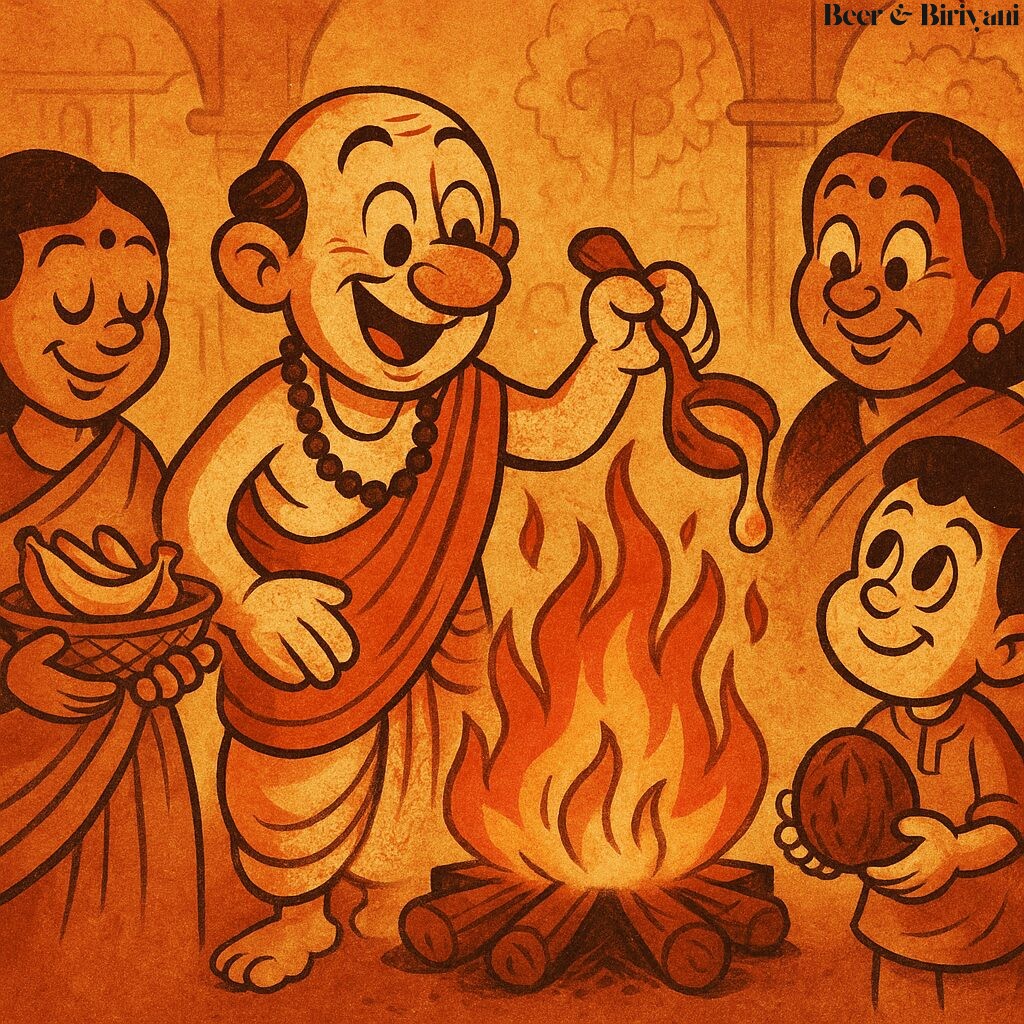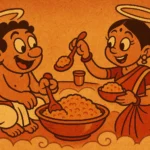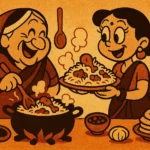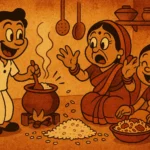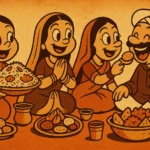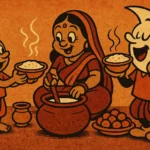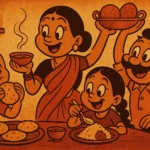I’ve seen ghee do a lot of things in Indian cooking. It melts into hot rice, finishes off a tadka with flair, and turns everyday dal into something grand. But the most dramatic thing I’ve ever seen it do? Catch fire mid-air during a havan, as a priest rhythmically chanted mantras and my uncle poured ladle after ladle of it into the flames like he was fueling a rocket launch to heaven.
It’s easy to think of food in India as just delicious. But in Hindu ceremonies, food stops being just edible. It becomes intentional. Symbolic. Sacred. Ghee isn’t just clarified butter—it’s devotion in molten form. Rice isn’t just a carb—it’s a grain of cosmic offering. Banana, betel leaf, coconut, sesame, honey—these aren’t groceries. They’re instruments in a spiritual orchestra, feeding not just people, but gods, ancestors, and the very fire that connects all three.
The Agni Connection
At the heart of many Hindu rituals sits Agni, the fire deity—messenger between mortals and the divine. The fire in a havan or homam isn’t symbolic. It’s functional. Offerings placed in the fire—ahuti—are believed to reach the gods through the smoke. As a child, this always blew my mind. “So you’re telling me if we throw puffed rice into this fire, Vishnu gets it?” And someone—usually an older cousin trying to look wise—would say, “Well, not directly. But yes.” I’d nod and pretend to get it. I still kind of don’t. But I also kind of do.
Why Ghee, Rice, and Fruit?
The ingredients used in rituals aren’t random. Ghee is considered the most sacred fat—it nourishes, burns clean, and carries aroma. It’s made from milk, which is already a sacred substance in Hinduism. Pour ghee into a fire, and the flames leap with what feels like gratitude.
Rice is a symbol of abundance. Each grain represents prosperity, fertility, and the idea of sustenance that comes from the earth. During yagnas, puffed rice (called laja or akshata when mixed with turmeric) is offered to invoke blessings. I remember once being told that uncooked rice is used because it represents raw potential—unfulfilled wishes sent to the divine inbox.
Fruits—especially bananas and coconuts—carry their own meanings. Bananas are the only tree whose entire structure (leaf, stem, fruit) is used in rituals. The coconut, often broken at temple steps or altars, symbolizes the breaking of ego. And let’s not forget the humble betel leaf and areca nut combo—considered a hospitality offering for visiting gods and VIP guests alike.
The Logic of the Offering
There’s often a quiet system to the offerings. Sweet before spice. Grains before fruit. Liquids poured in circular motion. Each step is an invitation, a conversation, a choreography. It’s not superstition—it’s structure. Rooted in the ritual grammar of the Vedas, where every element is assigned a function and a mood. The fire gets ghee. The gods get milk. The ancestors get sesame. The devotees get prasad. Everyone’s fed. Including the cosmos.
Modern Fire, Same Flame
In Austin, where I now live, I’ve seen havans conducted in backyards, with portable fire pits and online pandits Zooming in from Delhi. The ingredients travel in Ziploc bags. The ghee is organic. The rice is sometimes basmati, because that’s what we have. But the intent? Still intact. The fire still receives. The chants still echo. And when I sit beside that flame, ladle in hand, pouring ghee with a hesitating wrist, I feel the same nervous awe I did as a boy in our old Mumbai living room, watching the priest build fire with camphor and conviction.
Food as Communication
In Hinduism, food is rarely just for nourishment. It’s a language. Offerings are prayers you don’t have to speak. They’re acts of humility and hospitality, rooted in the idea that the divine deserves to be fed before we do. And while you may not hear a thank you in return, the act of offering—repeating it, refining it, respecting it—does something to you. Makes you a little softer. A little smaller. And maybe a little more hungry in the right way.
Feeding What You Can’t See
Whether it’s a simple puja at home with a diya and one banana, or an elaborate wedding yagna with piles of offerings, the essence is the same. You feed the fire. The fire carries it forward. You trust that something beyond you is being nourished. And in that act, you’re nourished too.
Because maybe, just maybe, some hungers are best answered not by eating—but by giving.
Born in Mumbai, now stir-frying feelings in Texas. Writes about food, memory, and the messy magic in between — mostly to stay hungry, sometimes just to stay sane.

